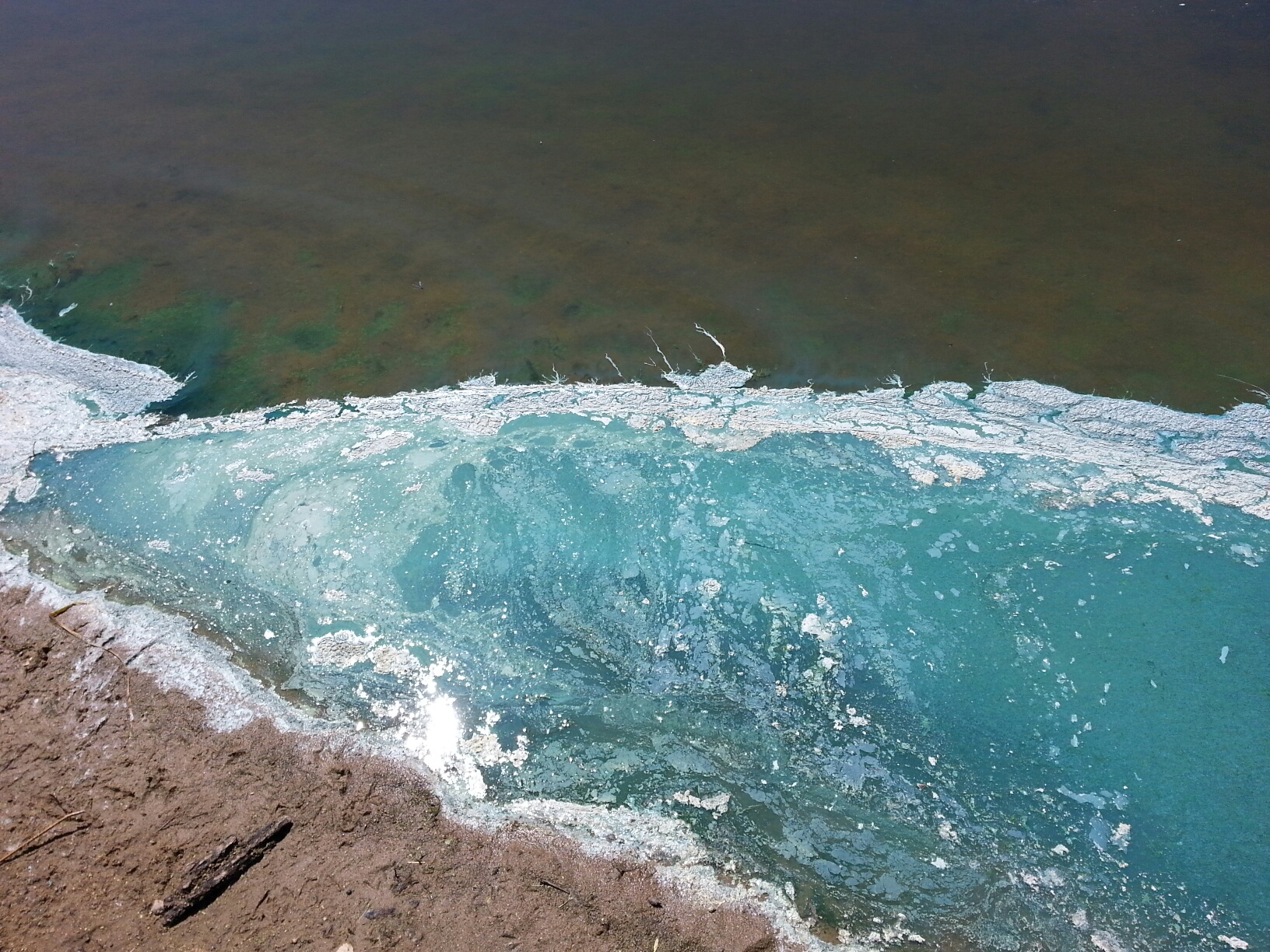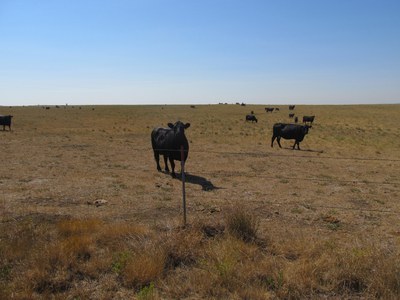Drought Increases Cyanobacterial Poisoning Risk to Livestock

An algae bloom in Walsh County has tested positive for toxic cyanobacteria production. (Photo courtesy of the Walsh County Soil Conservation District)

Cyanobacteria, also known as blue-breen algae, can produce toxins that are harmful to livestock, wildlife and people.
June 2017
Miranda Meehan, Livestock Environmental Stewardship Specialist
Cyanobacteria, also known as blue-green algae, can produce toxins that are harmful to livestock, wildlife and people.
"Although cyanobacteria typically are a concern beginning in mid-July, drought conditions have facilitated the growth of algae blooms," North Dakota State University Extension Service livestock environmental stewardship specialist Miranda Meehan says. "Algae blooms in North Dakota have tested positive for toxic cyanobacteria production and have led to the death of at least six animals."
Blue-green algae often occurs in stagnant ponds or dugouts with elevated nutrient levels, forming large colonies that appear as scum on or just below the water surface. Live cyanobacterial blooms can be green (but also red or yellow) and often turn blue after the bloom dies and dries on the surface or shoreline.
Some species of cyanobacteria can be toxic when livestock and wildlife ingest them. Toxicity is dependent on the species consuming the water, the concentration of the toxin or toxins, and the amount of water ingested.
Cyanobacteria can produce neuro and liver toxins. Signs of neurotoxin poisoning can appear within five minutes to up to several hours after ingestion. In animals, symptoms include weakness, staggering, muscle tremors, difficulty in breathing, convulsions and, ultimately, death.
Animals affected by liver toxins may exhibit weakness, pale-colored mucous membranes, mental derangement, bloody diarrhea and, ultimately, death.
Typically, livestock are found dead before producers observe symptoms.
"If cyanobacterial poisoning is suspected as the cause of death, producers should check the edges of ponds for deceased wildlife," NDSU veterinary toxicologist Michelle Mostrom says.
She also advises producers to put on gloves and collect a sample of the suspected cyanobacterial bloom from the surface of the water and deeper in the water. They should keep the sample cool but not freeze it, and submit it to the NDSU Veterinary Diagnostic Laboratory or a commercial laboratory. The sample can be evaluated microscopically for algae, or the water can be analyzed for several of the toxins at commercial labs at a higher cost.
For more information on sample collection and submission, contact your county agent of the NDSU Extension Service.
"Producers who lose livestock due to cyanobacteria poisoning may be eligible for compensation through the U.S. Department of Agriculture Farm Service Agency's Livestock Indemnity Program," says Brad Olson, a farm program director in the agency's Fargo office. "Compensation is provided for the first episode of deaths linked to a specific water source."
After that, producers must implement management practices to prevent additional losses, according to Olson. Producers also must report losses to the USDA Farm Service Agency within 30 days after the loss is apparent.
Meehan recommends producers follow these practices to prevent cyanobacterial poisoning in livestock:
- Reduce nutrient levels entering the water source by implementing a nutrient management plan or establishing buffer strips with perennial species.
- Create a designated drinking area where the risk of cyanobacteria is minimal.
- Fence off pond and pump water from the pond to the water tank.
- Use or provide other water sources following periods of hot, dry weather.
- Add copper sulfate to water if the source has a history of algae blooms. Apply 2 pounds of copper sulfate per acre-foot of water, which is equal to a rate of 8 pounds per 1 million gallons. Livestock must be fenced out of treated water sources for at least 10 days.
Check out the NDSU Extension Service's "Cyanobacteria (Blue-green Algae) Poisoning" publication for more information.
